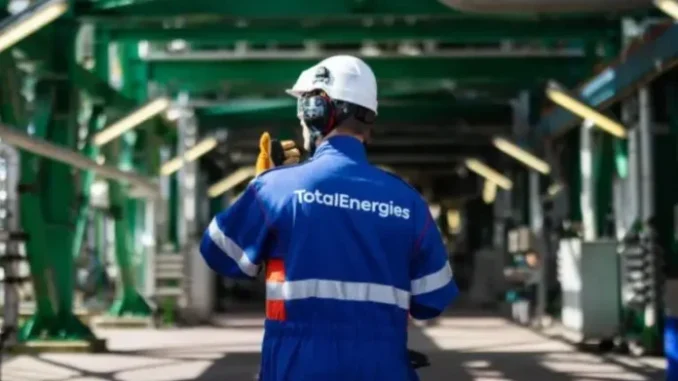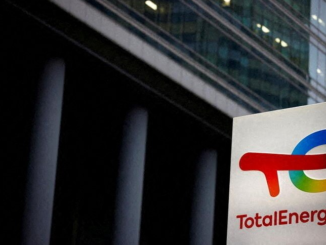
In a move signaling a strategic pivot amid rising debt and fluctuating energy markets, TotalEnergies has announced significant reductions in its capital expenditure (CapEx), with cuts exceeding $1 billion annually starting in 2026, and earlier adjustments already impacting its 2025 plans.
The French energy giant, one of the world’s largest integrated oil and gas companies, is implementing a $7.5 billion savings program over 2026-2030, encompassing both CapEx and operating expenses (OpEx), while confirming its overall growth objectives.
Additionally, TotalEnergies sold half of its solar assets and then, within hours, acquired natural gas assets.
Energy majors keep doubling down on gas in move away from renewables. Case in point 👇
TotalEnergies today sold half of its North American solar power business
… aaaaand then an hour later announced that it bought a bunch of US natural gas assets pic.twitter.com/33EKZgjSOP
— Stephen Stapczynski (@SStapczynski) September 29, 2025
These reductions appear to disproportionately affect the company’s renewables and low-carbon energy segments, as TotalEnergies grapples with profitability challenges in green projects and prioritizes debt reduction.
Are you Paying High Taxes in New Jersey, New York, or California?
Breaking Down the CapEx Cuts and Financial Context
TotalEnergies’ latest strategy update, presented on September 29, 2025, revises its CapEx guidance downward to approximately $16 billion for 2026 and $15-17 billion annually from 2027 to 2030—a clear step back from prior expectations.
For 2025, the company plans to invest between $17 billion and $17.5 billion, with about $4.5 billion allocated to low-carbon energies, primarily in its Integrated Power division.
This represents a modest reduction from earlier projections, where low-carbon investments were targeted at around $5 billion annually in previous years. The cuts come on the heels of a challenging financial period. In its second-quarter and first-half 2025 earnings report, released in July 2025, TotalEnergies posted an adjusted net income of $3.6 billion for Q2, contributing to a first-half total of $7.8 billion.
Cash flow from operations stood at $6.6 billion for the quarter, but the company faced headwinds from declining profits and rising debt.
Gearing (net debt to capital) reached 19%, reflecting a significant increase in debt levels—reportedly more than doubling in recent periods amid investments and market volatility.
Despite these pressures, TotalEnergies maintained its shareholder returns, authorizing $1.5 billion in Q4 2025 share buybacks (down from $2 billion previously), bringing the full-year total to $7.5 billion.
Balance sheet highlights from the first-half 2025 report show total assets supporting these operations, with net investments for the period aligning with ongoing projects.
Earnings per share came in at $1.69 for Q1 2025, underscoring steady but pressured performance.
The Integrated Power segment provided a bright spot, with net power production rising 28% year-on-year to 11.6 TWh, driven by renewable growth and acquisitions.
However, this wasn’t enough to offset broader declines, including a 26% drop in full-year 2024 net profit that prompted initial low-carbon investment adjustments for 2025.
Specific Amounts and Projects Impacted
The $7.5 billion savings program targets efficiencies across the board, but renewables have borne the brunt of recent adjustments. In February 2025, TotalEnergies explicitly scaled back low-carbon investments for the year, citing profitability concerns amid a slump in overall earnings.
This included a strategic retreat from aggressive expansion in areas like solar and wind, where returns have been hampered by supply chain issues, regulatory hurdles, and market saturation.Key actions include the divestment of 50% of a 1.4 GW solar portfolio in North America for $950 million, aimed at easing debt burdens while retaining partial ownership.
As of June 2025, the company’s gross renewable capacity stood at over 30 GW, with ambitions to reach 35 GW, but delays or cancellations in new projects are evident.
Broader industry reports note $14 billion in renewable project cancellations across the sector in 2025, though specific TotalEnergies projects aren’t detailed beyond the solar sale.
The company continues to emphasize energy efficiency, with $1 billion invested over 2023-2025 in site improvements, but this is more operational than expansive.
Hydrocarbon production, meanwhile, is set to grow by over 3% in 2025, benefiting from ramp-ups in oil and gas start-ups.
This suggests the cuts are indeed skewed toward renewables, allowing reallocation to more profitable fossil fuel segments.
What This Means for Investors
For investors, TotalEnergies’ CapEx reductions signal a pragmatic focus on financial discipline and shareholder value in a high-debt environment. By trimming low-carbon spending, the company aims to bolster its balance sheet, reduce gearing, and sustain robust buybacks and dividends—currently yielding attractive returns amid oil price stability.
This could enhance short-term cash flows and earnings predictability, particularly if oil and gas prices remain elevated. However, it introduces risks: over-reliance on fossils exposes the portfolio to regulatory pressures and energy transition volatility, potentially alienating ESG-focused investors. The move may also position TotalEnergies for opportunistic acquisitions in core oil and gas assets, mirroring industry trends. Stock performance could benefit from improved margins, but long-term growth in renewables—still a key pillar—might slow, capping upside in green energy booms.Is TotalEnergies Following the Path of BP, Shell, ExxonMobil, and Chevron?
Yes, TotalEnergies’ shift aligns closely with its peers, who are increasingly prioritizing oil and gas over renewables amid economic realities. BP, for instance, announced in February 2025 a boost in oil and gas investments by 20% to $10 billion, while slashing its energy transition budget by over $5 billion to $1.5-2 billion annually and dropping renewable targets.
Shell and Equinor have similarly stepped back from aggressive renewables paths, exiting or scaling down offshore wind projects while maintaining some ongoing developments.
U.S. giants ExxonMobil and Chevron are doubling down on fossil fuels, with plans to increase oil and gas spending and consolidate through mergers, viewing renewables as less profitable in the near term.
This collective retreat reflects broader industry challenges: volatile clean energy markets, regulatory uncertainty, and shareholder demands for returns. While all majors retain some green commitments—such as carbon capture or EV materials—they’re not quitting renewables entirely but recalibrating to favor hydrocarbons for now.
In summary, TotalEnergies’ CapEx cuts underscore a sector-wide pragmatism, balancing sustainability goals with financial resilience. Investors should monitor how this evolves amid global energy demands and policy shifts. We are seeing a huge trend for advertisers and investors moving away from the Net Zero “renewable energy” investments and looking to oil, gas and utilities for returns.
Avoid Paying Taxes in 2025
Crude Oil, LNG, Jet Fuel price quote
ENB Top News
ENB
Energy Dashboard
ENB Podcast
ENB Substack






